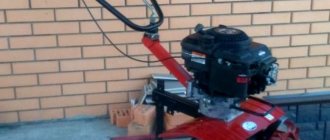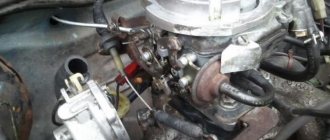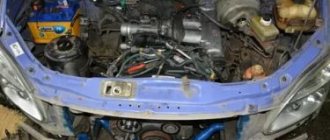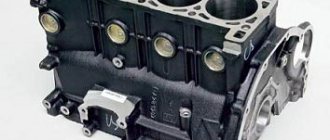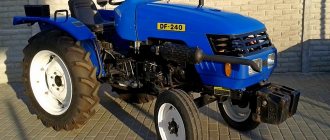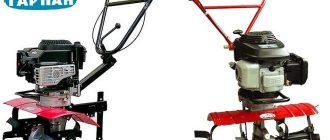The need for concrete in a wide variety of construction industries is constantly increasing, and this is quite natural, because such structures are quite reliable and durable if special technologies for their production are observed. In addition to the fact that it is imperative to maintain the quality of the concrete mixture, the process of delivering concrete directly to the place where it is laid is also quite important. Here, special equipment comes first, which ensures continuous supply, namely concrete pumps.
Concreting scheme: 1 - Concrete mixer, 2 - Concrete pump, 3 - Rubber hose, 4 - Concrete pipe, 5 - Pipe hanger, 6 - Pipe.
Application of concrete pumps in construction
Concrete pumps are widely used for the construction of monolithic high-rise buildings. Thanks to the installations, concrete is delivered to different heights, which reduces time and physical costs. The concrete pipeline ensures rapid supply of concrete mixture during the construction of bridges. Water and railway structures are built with its use. The concrete supply unit is used in the construction of port and tunnel connections.
In private construction, special equipment is not always used, which is explained by the limited access of special equipment. To simplify the task and speed up the construction process, the use of mini concrete pumps is recommended.
- Types
- Drive types
- Classification
- Manufacturers
- Device
- Operating principle of the pumping unit
- Pump life
- Equipment
- Right choice
- terms of Use
- Preparation for concreting
A concrete pump is a type of construction equipment (equipment) designed to receive ready-made concrete mixtures into a receiving hopper and then supply (pump) the concrete mixture to the place of installation for the purpose of constructing (erecting) monolithic structures.
Types of concrete pumps
Piston concrete pump . Currently, double-piston pumps are produced, the principle of operation of which is in the antiphase of two circuits: suction and discharge. This type of pump is the most common of all those presented on the world market.
A rotary concrete pump is a pressure generation (discharge) system designed to operate without an S-shaped gate. Feeding concrete using this method involves applying pressure from the rotor rollers to the concrete mixture. This feeding principle allows you to pump the heaviest and thickest mixtures.
Screw concrete pump . This is a mechanism whose operating principle is to supply concrete mixture using an auger. This type of pumping unit ensures the smoothest and most constant (without jerking) supply of ready-mixed concrete and mortars to the concrete laying site.
Types of concrete pump drives
There are two types of pump drives: diesel and electric. The most common type of pump is a diesel one, the principle of which is to drive the pumping unit of a concrete pump using a diesel engine. The power of diesel engines ranges from 20 kW to 400 kW.
The operating principle of an electric pump is to drive the pumping unit using an electric motor. The power of electric motors for a concrete pumping installation ranges from 10 kW to 300 kW.
Classification of concrete pumps
There are four types of concrete pumps: truck-mounted, stationary, linear and pneumatic pumps.
Automotive pumps are concrete pumps that are installed on a vehicle chassis. The length of the distribution boom of an automobile pump varies from 12 meters to 100 meters. They are intended for concreting bridges, overpasses, low-rise buildings, and foundations.
Stationary concrete pump - designed for the construction of multi-story buildings, as well as for supplying concrete mixture to the maximum length. In the case of using a stationary pump, concrete is supplied through a concrete pipeline. The delivery range and height depend on the characteristics of the concrete pump. The maximum recorded concrete delivery height using a stationary pump (SCHWING BP 8800 D) was 700 meters, the maximum delivery distance (Putzmeister BSA 14000 HDR) was 4,000 meters.
A linear concrete pump is a type of concrete pump mounted on a vehicle chassis, but without a concrete distribution boom, its operating principle is similar to that of a stationary concrete pump and is designed to supply concrete to a height of up to 90 meters and a distance of 300 meters. The main advantage of a stationary concrete pump is the maximum height and range of the concrete mixture, unlike other types. The advantage of a linear and automotive pump is the savings on the cost of relocating a set of equipment from the technical base to the customer’s construction site.
A pneumatic blower is a mechanism for supplying concrete mixtures or solutions by creating excess pressure in a sealed chamber; with their help, you can prepare a concrete mixture by loading components into a hopper, followed by mixing.
The finished solution is supplied through rubber hoses with a diameter of 50-100 mm. The pressure in the chamber is built up using an air compressor. This type of concrete pump is suitable for supplying both ready-made and semi-dry mixtures.
Concrete pump manufacturers
- Germany: SCHWING, Putzmeister, WAITZINGER, LIEBHERR, Klein, Pumi, Reich.
- Italy: CIFA, MECBO, SERMAC, COIME.
- South Korea: KSP, Junjin, Daewoo, DongYan, EverDigm, KIA, Elephant, Hyundai, Kanglim, Kyunwon.
- China: Ssny, Zoomlion, Gold, DongFeng, XCMG, Foton, Shenxing, CAMC, Tielishi, Shantui, Hainuo, Tongya, Hogzhou.
- Russia: TZA (Tuymazinsky plant), Construction Machines LLC
- Türkiye: BetonStar, BST, Royal.
- USA: Reed.
- Finland: Saraka Eco.
Concrete pump device
The vast majority of concrete pumps include the following components:
- Concrete pistons,
- Concrete feeding cylinders,
- Hydraulic cylinders,
- Gate (rotary valve),
- Receiving bunker,
- Hydraulic pump group,
- Hydraulic distributors,
- cooling bunker,
- Centralized lubrication system,
- Hydraulic motors,
- Diesel, electric engine,
- Control cabinet,
- Remote Control,
- Water installation.
The pumping unit of the concrete pump is mounted on a welded frame with 3-4 supports, depending on the model, and a wheel pair to facilitate its movement inside the construction site. The side covers of the pump body provide access and safety to the components and assemblies of the pumping unit.
The receiving hopper is made by welding from rolled sheet steel. The upper part of the concrete pump is protected by a metal grill to prevent foreign objects from getting into the concrete mixture.
Operating principle of the pumping unit
While the pump is operating, the concrete mixture enters the receiving hopper, where it undergoes continuous mixing to maintain homogeneity and prevent segregation.
From the concrete pump hopper, the mixture is sucked by a piston into a concrete supply cylinder, from which it is pushed through an S-shaped gate into the concrete supply line. Along the concrete pipeline, the mixture is supplied to the place of installation in a horizontal or vertical structure mounted from formwork.
The movement of the piston is strictly coordinated with the position of the suction and discharge valve. The pump cylinder wears out relatively quickly, so the design provides for the possibility of replacing it. In the cylinder of the pumping unit, a piston with a rubber tip moves, which fits tightly to the inside of the cylinder liner and comes into direct contact with the concrete mixture.
Pump life
The service life of the pump is 30 years, depending on the conditions and intensity of work, the volume and brand of concrete supplied, the delivery distance and height. Also, the service life depends on the correct and timely maintenance and repair, as well as the spare parts used and the correct operation of the equipment.
Concrete pump equipment
To supply concrete mixture, each pumping unit is equipped with a concrete pipeline and necessary auxiliary equipment. The concrete pipe is connected to the pump using a bolt or lever lock.
The concrete pipeline is made of metal cold-rolled or welded pipes. The concrete pipeline kit includes straight and curved pipe links of various lengths, namely:
- concrete pipe SK L=3000 mm,
- concrete pipe SK L=2000 mm,
- concrete pipe SK L=1000 mm,
- concrete pipe angle SK 90 degrees R=275 mm,
- concrete pipe angle SK 60 degrees R=275 mm,
- concrete pipe angle SK 45 degrees R=275 mm,
- concrete pipe angle SK 30 degrees R=275 mm,
- concrete pipe angle SK 90 degrees R=315 mm,
- concrete pipe angle SK 60 degrees R=315 mm,
- concrete pipe angle SK 45 degrees R=315 mm,
- concrete pipe angle SK 30 degrees R=315 mm,
- concrete pipe angle SK 90 degrees R=500 mm,
- concrete pipe angle SK 60 degrees R=500 mm,
- concrete pipe angle SK 45 degrees R=500 mm,
- concrete pipe angle SK 30 degrees R=500 mm,
- concrete pipe angle SK 15 degrees R=500 mm,
- concrete pipe angle SK 90 degrees R=1000 mm,
- concrete pipe angle SK 60 degrees R=1000 mm,
- concrete pipe angle SK 45 degrees R=1000 mm,
- concrete pipe angle SK 30 degrees R=1000 mm,
- concrete pipe angle SK 15 degrees R=1000 mm,
- concrete pipe angle SK 90 degrees R=1200 mm,
- concrete pipe angle SK 60 degrees R=1200 mm,
- concrete pipe angle SK 45 degrees R=1200 mm,
- concrete pipe angle SK 30 degrees R=1200 mm,
- concrete pipe angle SK 15 degrees R=1200 mm,
- rubber hose for concrete pipe SK L=3000 mm,
- rubber hose for concrete pipe SK L=4000 mm,
- rubber hose for concrete pipe SK L=5000 mm,
- rubber hose for concrete pipe SK L=6000 mm,
- bolted concrete pipeline lock, lever concrete pipeline lock,
- rubber seals for pipes.
To supply concrete mixtures to a significant height and distance, it is necessary to use reinforced concrete pipes with ZX flanges. Concrete pipes vary in wall thickness and range from 4 to 10 mm; double-layer concrete pipes are also produced.
As auxiliary equipment for a concrete pump, concrete distribution booms are used, which are divided into: mechanical, semi-hydraulic, hydraulic mobile, hydraulic stationary. Mechanical circular concrete distribution booms are used for concreting only horizontal surfaces; the length of this type of boom is from 10 to 17 meters. Semi-hydraulic concrete dispensing booms are used for concreting horizontal and vertical structures with a height of no more than 4 meters, the length of the booms is from 10 to 15 meters. Hydraulic mobile concrete dispensing booms are used for concreting long buildings and structures, the working radius is from 12 to 19 meters. Hydraulic stationary concrete dispensing booms are used for the construction of high-rise buildings; the principle of installing this type of distributing booms directly inside the building in the technological openings of the floors. Stationary distribution booms are produced in lengths of 18, 20, 21, 24, 28, 30, 32, 33, 35, 45, 50 meters long, depending on the model and manufacturer. Stationary concrete distribution booms 45 and 50 meters long are usually mounted on crane columns.
Air compressors are also used as auxiliary equipment, which are used for purging (cleaning pipes of concrete mixture residues) of concrete pipelines. Compressors based on their operating principle are divided into diesel and electric; diesel compressors are usually more powerful.
Choosing the right concrete pump
The correct selection of the optimal pump for the conditions of a particular construction site depends on both the parameters of the construction site and the characteristics of the equipment. First of all, it is necessary to evaluate the capabilities of the equipment and correlate them with the distance over which it is planned to supply the concrete mixture. This is required for both truck-mounted concrete pumps and stationary models. When preference is given to a concrete pump, the determining factor in this case is the length of the distribution boom. If the choice is made in favor of stationary models, then you should evaluate the power of its engine and the maximum distance over which the concrete mixture must be supplied. In the case of using a car pump, there is no need to use a truck crane and a truck, and the overall dimensions of the chassis allow it to be driven within the construction site. Initially, it is necessary to assess the upcoming amount of work. It may well turn out that a low-capacity concrete pump will be quite sufficient to meet the needs of the construction of the facility. It is necessary to decide on the type of engine of the pump to be purchased, based on what is more profitable under existing conditions - electricity or diesel fuel. The main role is played by the type of drive, which can be hydraulic or mechanical. In case of large volumes of concreting, preference should be given to models with a hydraulic drive, since they have greater productivity, range and height of supply of concrete mixture. A properly selected concrete pump will ensure maximum efficiency, speed and quality of concreting work, which will have a positive impact on the progress of construction.
Operating conditions for concrete pumps
- Supplying concrete mixture with a concrete pump without first lubricating the concrete pipes with the “starting” mixture is prohibited.
- The maximum downtime without pumping concrete mixture should not exceed 15-20 minutes. The total waiting time with pumping the concrete mixture can be 2-2.5 hours, after which it is necessary to blow and wash all parts of the concrete pump and receiving hopper in contact with the concrete mixture.
- The customer construction organization allocates one or two workers every day to help with the operation of the concrete pump. After pumping the concrete mixture is completed, the pump receiving hopper is cleaned and washed and the site is cleaned.
- The temperature of the concrete mixture in winter should not be lower than +10 °C. It is prohibited to store the concrete mixture in the concrete pipeline for more than 15 minutes to avoid freezing.
- It is prohibited: operation of concrete pumps in winter at air temperatures below -18 ° C without preliminary insulation of concrete pipelines and heating of the concrete mixture; in case of heavy rain, eroding the concrete mixture; when the wind force is more than 15 m/sec.; during a thunderstorm.
Organization of safe working conditions
- All work should be carried out in accordance with the requirements of SNiP 12-04-2002, SNiP 12-03-2001, “Rules for the design and safe operation of load-lifting cranes”, “Fire safety rules in the Russian Federation” PPB 01-03.
- When working together on site with pumps and tower cranes, the following requirements must be observed:
Install the truck-mounted concrete pump outside the hazardous areas of the installation cranes;
the operating zones of the cranes and the pump should not intersect, and the distance between these zones should be at least 5 m plus the maximum dimensions of the load lifted by the tower crane;
when working together with a concrete pump and installation cranes, the work must be carried out under the direct supervision of the person responsible for the safe work of moving cargo with cranes, appointed by order.
Preparation for concreting
Before starting work you must:
- develop a PPR indicating the sequence of assembly of the concrete pipeline and the installation location of the pump;
- provide the construction site with electricity and water;
- install the concrete pump at a minimum distance from the concrete structures, arrange the distribution boom to the place where the concrete is laid;
- the surface of the concrete pipeline pipes must be calibrated, the concrete pipeline links must not have
- The distribution hose is brought to the last link of the concrete pipeline and installed so that there are no kinks. Place a rubber seal at the junction of the rubber sleeve and the last link and fasten the joint with a connecting clamp.
- provide access roads and platforms for the movement and maneuvering of concrete mixer trucks;
- provide water for washing equipment;
- check the serviceability of the concrete pump and safety valves;
- check the oil level in the engine, the presence of lubrication and the serviceability of the instruments, the condition of the joints of the concrete pipeline, the completeness of the auxiliary equipment for purging and washing the concrete pipeline.
- the pre-start mixture can be prepared from cement and water (dough-like consistency), or a cement-sand mortar with the composition C:P -1:1 (mobility 6-8 cm) in a volume of 20-40 liters for every 10 m of a pipeline with a diameter of 125 mm.
Principle of operation
To determine the principles of operation of a concrete pump, you need to understand its structure. The equipment has a mixer, wheels, a lubrication system, an outlet, supports, and a loading hopper. The equipment also consists of a cooling system, a gate valve, an oil tank, and a lubrication system. The concrete pump has a tool box, a pressure gauge, a pumping valve, a hydraulic system, an oil filter, a casing, an electrical panel, a chassis, and a tow hitch. The concrete drainage device consists of:
- Concrete drainage elbow;
- Flushing device;
- Concrete drainage pipe;
- Concrete drainage lock with rubber seal.
The main unit of construction equipment is an engine of varying power, which can be electric or diesel. The pumping system operates via an open circuit, which is subject to adjustment.
Thanks to the universal design of the concrete pump, stepless hydraulic adjustment is possible. The amount of fuel supplied can be adjusted. The installation consists of a water pump and two hydraulic cylinders. The last of them connect the pistons, which leads to reciprocating movements. This process consists of the pistons moving in different directions.
The flow of concrete mixture from the outlet openings is carried out into the loading sector. It is pumped by two cylinders that move in different directions. Suction and injection of the mixture is ensured by the connection of transport and hydraulic cylinders.
Potential problems
Using a concrete pumping station significantly increases the speed of construction. But you need to be prepared for the fact that in the process of servicing these devices you will have to face some difficulties. The most popular among them:
- Overload and motor failure. This is one of the most common problems. To avoid this, it is necessary not to give the engine excessive speed. An indicator of normal functioning is the absence of vibration;
- Engine overheating. It is necessary to keep the temperature around 70-80 degrees. If it rises higher, let it cool;
- Wear of some parts. The chemical properties of concrete, as well as increased mechanical stress, lead to the fact that rubber parts may lose their properties. There is only 1 solution - you need to have a sufficient supply of consumables.
Considering these nuances, as well as the cost of concrete pumps, the question of self-assembly of the device naturally arises.
Advantages of automatic concrete pumps
The concrete pump has excellent technical characteristics and has many advantages:
- Ensuring a continuous installation process. When concreting is stopped, a decrease in the quality of the finished material is observed, since concrete mixtures of different levels of hardening do not adhere well to each other.
- Pipes for the concrete pump ensure the supply of the mixture to a height. The installations provide the ability to move a large volume of mixture in the shortest possible time.
- The operating principle of a concrete pump significantly reduces time and labor costs when supplying the mixture to a construction site.
- It is possible to use the equipment for partial construction of structures.
- Compared to belt conveyors, concrete pipelines are characterized by compactness.
- The units are characterized by ease of installation, which speeds up the construction process.
- During the supply of mixtures, water losses are minimized, which has a positive effect on the quality of concrete. This aspect is important when it is necessary to transport the mixture over significant distances.
The characteristics of concrete pumps allow them to be used during complex construction.
Recommendations for choosing concrete pumps
First of all, you need to decide whether the equipment will be purchased or rented. You have a large construction company, concreting work - the main technological process - stationary concrete pumps on a wheeled trailer - the best equipment. Low-rise, scattered construction sites - ABN can help you.
For the construction of individual objects, where it is impossible to ensure a constant load on the equipment, it is profitable to rent a concrete pump.
Specialized stores sell new and used equipment from different manufacturers. It is important for you to choose a concrete pump according to your request. ABS is more expensive - the equipment is non-removable and installed on the chassis of a truck.
Important selection criteria:
- type of concrete pump - piston or rotary;
- power of the power plant or engine;
- pressure and distance of pumping concrete mixture;
- solution productivity;
- pipe pressure;
- manufacturer.
Check what permissible granule size the manufacturer has included in the technical characteristics, climatic and other operating features of the equipment.
It is more profitable to rent equipment. If the unit does not fit, it can be replaced. Maintenance, management and troubleshooting are usually the responsibility of the landlord.
Flaws
Concrete pumps have certain disadvantages that need to be taken into account when purchasing.
This technology is expensive and is not available to all users and companies.
But, with its regular use in construction, it justifies itself. When operating the equipment, it is necessary to install a concrete pipeline. A pipe system on the boom solves the problem.
If there is a need for spot filling of small areas, for example, when installing a prefabricated monolithic structure, this equipment is not advisable to use. During long-term operation of the installations, wear of the pump mechanism and pipe is observed.
Pump design
The solution is supplied by piston or rotary concrete pumps. In this case, the choice of a specific type of unit depends on the specific goal.
Piston
Figure 2. Concrete pump design
These devices operate on a principle similar to all similar systems. When the piston moves downward, a certain volume of solution begins to be sucked in; during the reverse stroke, it is pushed into the pipeline. For operation, a slide valve is required, which opens the receiver during suction and then closes it at the moment of ejection.
Rotary
Figure 3. Rotary concrete pump
The basis of the unit is a shaft with rubberized rollers. When the rotor rotates, these rollers move the solution towards the outlet. Thanks to the reverse movement of the motor, any blockages can be easily cleared. The disadvantage of such equipment is frequent breakdowns due to damage to the seals and ruptures of the reinforced hose. Although it is not difficult to fix these problems.
Problems that may arise when laying using concrete pumps
The installation uses pressure to deliver the concrete mixture to a height. When the equipment is used incorrectly, certain problems occur:
- If the speed of laying the mixture increases, then the formation of cavities is observed in the monolith, especially when using a fine mesh for reinforcement. That is why during work you need to ensure that the mixture is supplied evenly.
- If a surface vibrator is used for compaction rather than a deep one, then the mixture must be placed in a small volume. When carrying out work, compaction of each layer is a prerequisite.
- During work, it is recommended to carefully fix the reinforcement frame, since the flow of concrete can disrupt it.
- After completing the work, you need to wash the concrete pipeline pipes, as well as the pump.
- If the concrete pump has a high capacity, then builders must hold the flexible end while operating it.
- To avoid traffic jams, it is strictly forbidden to take long breaks from work.
- If plugs form in the concrete pipeline, this can lead to damage to the pump mechanisms. At the initial stage of plug formation, the pump is reversed. You can disconnect the section and clean the pipes manually.
Stationary
Scheme of a stationary concrete pump.
The most common stationary one is made in several different versions and is installed mainly on a flatbed truck or a special platform that provides ease of transportation. It should be noted that this design is made in the form of a trailer with a chassis and works to ensure a continuous supply of concrete. This one can be transported from one construction site to another by simply hooking it onto a special attachment to the truck. The operating principle is based on the fact that this unit can continuously pump large quantities of concrete. The design of such a device supports two different modes at once, such as supplying concrete under fairly high pressure, however, with this operating mode, productivity drops very much, and a very low pressure mode, but with much higher productivity. This need is due to the fact that when laying concrete pipes at sharp corners, it is necessary to develop very high pressure in the cylinders themselves, thereby slightly raising the concrete itself underneath them.
Unit types
Depending on how concrete pumps work, they are divided into several types. Pumping of liquid is carried out using ejection, membranes, centrifugal force, etc.
Operation of the piston system
A piston pump is the most popular equipment, which consists of cylinders and pistons. When they move, the moving medium is captured and pushed out. The concrete is stored in special bunkers with a capacity of 12-15 cubic meters, which ensures continuous operation. An additional mixing device is installed in the hopper, which eliminates the possibility of mixture stratification.
The cylinder and the pump receiver are connected to each other using a valve, which opens when the piston returns, which ensures the flow of concrete mixture. If a straight stroke of the piston is observed, this leads to the mixture being pushed into the concrete pipeline.
The installation is often called a hydraulic pump, since the movement of the pistons is ensured by hydraulic cylinders. The oil flow in them is controlled by a distributor. The gates open and close hydraulically.
Using the equipment, good pressure of the concrete mixture is ensured, as it has high productivity.
Rotor system operation
The equipment has a simple design. His work is based on the method of squeezing out a concrete mixture. The equipment consists of a receiving hopper, a rotor, which is equipped with rollers and a drive, and a housing.
Compared to a piston system, a rotary pump creates less pulsation at the outlet. The equipment creates a minimal amount of noise during operation, which ensures ease of use. The units are lightweight and small in size, which guarantees their convenient operation.
The disadvantage of rotary systems is that they cannot transport mixtures with large inclusions. Compared to piston designs, they create less pressure. The flexible part of the pressure section wears out quite quickly.
Mobile mini-stations
The technology used for laying concrete is complex and expensive. To justify the purchase and make a profit, it must operate at maximum capacity. On large construction sites, heavy-duty, productive ABS pays off. In low-rise construction, it is better to use the mini type of equipment.
When choosing equipment, pay attention to the technical capabilities of small-sized installations. Self-propelled units have high maneuverability, which is important for narrow streets in old buildings.
If the ABN on the KamAZ platform requires a turning area of 10-12 m2, for small-sized equipment you need 2 times less. Considering that the height of the structure does not exceed 6 meters, mini-equipment can be installed indoors in a closed production area.
The equipment is multifunctional; it can work on ready-made concrete poured into a bunker or prepare a building mixture from dry components in it, if a mixer is included in the kit.
To service the ABN, 5-6 auxiliary workers are required; the mini station is served by a driver and a worker.
Technical characteristics of mini concrete pumps:
- Types of pumps – rotary and piston.
- Stationary and mobile pulp pumping stations.
- Engine: diesel or electric.
- The maximum horizontal pumping distance is 150 meters.
- The maximum injection height is 50 meters.
- capacity options 5-62 m3/hour.
- High maneuverability.
Often the capabilities of such equipment are sufficient for the construction of low-rise buildings. There is a peculiarity - all pumping processes must be completed within 20 minutes, after which the labyrinths must be washed under pressure.
The average weight of a stationary unit is about a ton; it can be delivered to the site by light-duty transport. The cost of renting or purchasing a mini-concrete pump pays off within 6-8 months, provided it is fully loaded. When choosing equipment, you need to remember that a piston pump is 2 times more productive than a rotary pump. However, the rotary one operates with low noise and pumps the thick mass evenly without pulsation.
Unit mounting options
Types of concrete pumps are determined in accordance with the features of their installation. They can be stationary or mobile.
Stationary pumps
Among the various units, stationary pumps are popular in the construction of large objects. They have little mobility. The units are mounted on a wheeled chassis, which allows them to be moved.
Fixed brands of concrete pumps are produced, which are installed on a durable base. The scope of their application is factories of reinforced concrete products. Such equipment supplies the concrete mixture to a great height. The pump is driven by an internal combustion engine, which can be electric, gasoline or diesel.
Stationary concrete pipelines are characterized by high productivity, so they are used when necessary to perform large volumes of work. The installations are used in large-scale construction.
Concrete pump sb 207a
Pumps on a car base
Automotive concrete pumps are most often mounted on trucks. The power take-off shaft provides the equipment drive. Hydraulic transmission can also be used in installations.
In Moscow and the CIS you can find self-propelled units on a tracked chassis. They are used when it is impossible for standard equipment to enter a construction site.
Truck-mounted concrete pumps are characterized by the presence of a retractable, controlled boom, which is equipped with a concrete pipeline. The boom reach can be more than 30 meters. We produce equipment based on a concrete mixer.
Types of installations
Different types of concrete pumps are used in construction. They differ in their parameters.
Engine type
The units operate on a diesel or electric engine. Electrical equipment is usually used in closed areas. But such equipment is not very common, since electricity is not available everywhere. Because of this, diesel models are more popular.
type of drive
The mixture is supplied by a hydraulic or mechanical drive. The first option is more common, since it is capable of developing greater pressure, increasing the power of the equipment and the distance of transportation of the solution. The advantage of hydraulics is the smooth movement of the piston, which ensures an even supply of the mixture.
Buy or do it yourself
A concrete pump is an expensive piece of equipment that can be purchased at a specialty store. If there is a lack of funds, you are given the opportunity to install the equipment yourself. When choosing settings, it is recommended to follow certain rules:
- Initially, the functional load of the equipment and its compliance with the construction work being performed is determined.
- If the need for a concrete pump arises 1-2 times during construction, it would be better to rent it.
- The selection of parameters for the length and height of supply of the concrete mixture is carried out individually.
- During the selection period of equipment, the characteristics of its power and its productivity are determined.
- Experts recommend giving preference to mobile installations, since during the construction of various objects there is a need to use additional equipment for transporting stationary installations.
The most popular brands include
Chinese concrete pump Sany
. They are easy to use and durable. The installation is controlled remotely using a special remote control. There is no significant noise generated during operation of the equipment. The concrete supply speed in the installation can be adjusted.
Italian concrete pump Cifa
fully meets modern construction technologies. High-performance components are used to complete it. Thanks to the presence of a bunker in the installation, the quality of concrete improves. The installation is compact, which allows it to be used on construction sites with limited space.
Putzmeister is a German concrete pump
, which is capable of quickly and efficiently transporting concrete mixture. It is used for the rapid construction of bridges, tunnel structures, and high-rise buildings. Devices with remote control are characterized by fast and high-quality operation.
Concrete pumps
Concrete pumps belong to special construction equipment and are necessary for supplying concrete to hard-to-reach places when the access of concrete mixer trucks is difficult. The concrete pump can supply concrete solutions not only horizontally, but also vertically. The maximum boom size of a concrete pump is 64 meters and it belongs to industrial special equipment. The cost of these pumps is several tens of millions of rubles; accordingly, the rental price per shift is also high.
But what if trains need to be delivered over a longer distance? There is a solution!
Truck-mounted concrete pumps - application in construction
For such purposes, linear concrete pumps are used; the principle of operation is to connect an additional line to the boom or hopper, consisting of 3-meter pipes secured with clamps. The pumping length using this type of concrete pump can vary up to 200 m. Installation, dismantling and washing of concrete pipelines is carried out by the customer.
There is usually up to 80 meters of concrete pipe on board, and if a larger quantity is required, it is necessary to order additional transport, which, as you understand, will increase the rental cost.
When operating the autopump, a centralized supply must be organized to avoid the solutions setting inside the line, which can lead to its damage.
Operating conditions of a concrete pump
When ordering concrete pumps, you need to properly prepare the site. Depending on the length of the ABN boom, the dimensions of this platform also change. On average, for propulsion pumps the site dimensions are 6 x 9 meters.
Moreover, for the linear ABN type, the starting chemical additive that is included in the price tag of a conventional pump is no longer enough.
After installing the pump and laying out the line, the person responsible for accepting concrete products needs to purchase cement laitance from the manufacturer, or purchase two bags of cement, which are usually enough to get started. The operator will coordinate the foreman regarding the necessary actions.
How to make a concrete pump - production technology
Making a concrete pump yourself is a complex task that is carried out in several stages:
- We create a drawing. You can use existing diagrams or develop it yourself. In the second option, the structure is created to perform specific tasks.
- Select the cylinder and piston. When choosing this key element of the system, you need to ensure that there is a power reserve. The cylinder diameter should be up to 400 millimeters, and the piston stroke should be more than 50 centimeters. If the parameters do not match, the number of operating cycles increases, which leads to their rapid wear.
- We adjust the pistons and cylinder. To ensure long service life of the pump, we remove all roughness.
- Select the node type. To reduce the complexity and cost of manufacturing equipment, the use of an electromechanical pump is recommended.
- We install the gearbox. The mechanism must consist of a subordinate number, which will reduce and convert rotational movements into translational ones.
- We install the king pin. The element is connected to the mechanism. The welded frame is made from a metal corner. Next, check valves are introduced into the system, the production material of which is alloy steel.
- At the final stage, the functionality of the installation is checked.
A concrete pump is a universal high-tech equipment that is widely used to supply concrete mixture to heights. There are a large number of types of equipment, which allows you to choose the most appropriate option in accordance with the tasks.
Which type is easiest to collect?
When considering the issue of independently building a pumping station, one should first of all start from the simplicity of one type or another.
Piston - is immediately dismissed, because for all its positive qualities, it has a very complex device. A screw one is much simpler.
To produce it you will need:
- screw;
- engine;
- sheet metal needed to create a bunker.
The positive side when creating this type is that all the elements can be found - you don’t have to contact a turner. And in order to connect everything into one mechanism, you will need the skills of an entry-level welder.
Methods of placing concrete pumps
The main difference between the units is the base options. There are automobile, mobile (mini) and stationary concrete pumps.
Automotive equipment
High mobility makes it possible to use this option even if construction is carried out on sites as far as possible from the benefits of civilization. This is a vehicle (usually a truck) that has a special platform on which a pumping station with a concrete pipeline already connected to it is securely fixed.
The main components of a concrete pump are a concrete receiving hopper and a boom. The last element is a steel pipe that has several sections called elbows. The length that such an arrow is capable of “rising” is 10-64 m. Its last element is connected to a flexible hose, in slang it is called a trunk. It makes it possible to direct a stream of solution to a given location. Before starting up the equipment, a certain amount of laitance or a special chemical (starting) solution is poured into it to lubricate the pipes.
Advantages of a truck-mounted concrete pump:
- maximum pumping length - up to 200 m, height - up to 70 m;
- maximum productivity (up to 90 cubic meters per hour);
- no need to find suitable transport;
- relative compactness of the station;
- Great maneuverability.
Flaws:
- expensive rent;
- insufficient feed height when compared with the “stationary” one.
Stationary concrete pumps
Such units are called stationary conventionally, since most of them still have the ability to move, but do not know how to move without assistance. The first example is a trailer on which a concrete pumping station is installed. It is transported using special equipment - a tractor.
Installing the unit on a separate site makes it possible to make the concrete pump more powerful, since the concrete pipeline - a long flexible hose - is installed directly on the construction site. This type of pump is used in the construction of multi-story buildings and high-rise buildings. Often, for more efficient operation, concrete pipes can be hung on a construction crane.
Completely stationary concrete pumps, which are installed on a permanent foundation, are a technique used in concrete factories. However, in these cases, belt conveyors or buckets are used, moved by cranes (gantry, bridge).
Advantages of stationary and “semi-stationary” trailed type:
- the ability to pump a very large amount of concrete mixture, when compared with concrete pumps (200 or more cubic meters per hour);
- the maximum solution supply distance is 300 m horizontally, 100 m vertically;
- different ways of supplying the solution: both horizontally and vertically;
- low price.
Minuses:
insufficient maneuverability; inability to quickly transport the unit; risk of damaging the hose due to careless or very frequent use.
On stationary units and on those installed on car trailers, piston systems are used, to which this type of equipment owes the highest performance.
Special concrete pumps
There are truck-mounted concrete pumps equipped with a mixer, but the maximum vertical pumping capacity of this type of equipment is small - only 30 m. There is another type of equipment - special, its tasks are far from being called trivial. For example, they produce mobile concrete pumps with caterpillar tracks. They are often used together with drilling machines. There is no replacement for such equipment for the construction of tunnels in mountainous areas.
Other examples are combined installations that produce and pump the solution, concrete pumps that have a hydraulic manipulator for spraying the mixture onto various surfaces. This list can be continued, since irreplaceable concrete mixtures are used very widely. Special equipment is being developed in Russia (Stroymash Center), Germany (Putzmeister AG), Italy (CIFA, Mecbo) and China (MITSUBER, XCMG).
Mobile mini-stations
This option is used when a relatively small amount of concrete is needed. Mini-pumps specialize in helping with the construction of small and medium-sized facilities. Its small size makes it easy to move the concrete pump around the site, making work quick and relatively easy.
However, for such super-maneuverability, mini-equipment pays with worse technical characteristics - maximum height and feed length. The first is 50 m, the second is 150. However, in private construction, these disadvantages, as a rule, are not disadvantages.
We study the main characteristics of concrete pumps used on construction sites
We can conditionally divide all existing characteristics of concrete pumps into several main categories that divide the equipment into certain types:
1. Drive.
There are three main types in this category: mechanical, hydraulic and crank.
truck-mounted concrete pump SANY SY5400THB-45
concrete pump with folded boom
2. Pump design.
There are two main design options here: pistonless (rotary) and piston.
3. Concrete feeding device.
Based on the supply principle, the following equipment options are defined: small-sized, stationary, linear and boom.
4. Method of transportation.
According to the method of movement, the following types of devices are distinguished: mounted on a tractor chassis, mounted on the chassis of a conventional vehicle, non-self-propelled trailers.
5. Pumping system.
In this case, only two groups are defined: those equipped with either an S-shaped or C-shaped gate.
concrete pump BSA 1005 D
table with characteristics of concrete pumps BSA 1005D, BSA 1005DSV, BSA 1005E
concrete pump P715 TD
table with characteristics of concrete pumps P715 TD, P715 TE
The principle of operation of the mechanism depends on what specific characteristics it has. Let's look at the most important points:
1. Hydraulic type.
A device with such a drive first transports the mixture into the hopper, then, by oscillating the piston, it tightens it (the process occurs after the discharge valve is closed) and pushes the mixture through the pipe (the process occurs after the said valve opens). The flow of the mixture flows evenly with a constant amount of dispensed solution.
2. Mechanical type.
The process is similar to that described above, but the piston stroke is not long, which is why the volume of supplied material is not the same. In addition, the speed of movement of the piston in the cylinder is not constant, which can lead to engine overheating.
rotary pump design types and operating principles of concrete pumps
3. Piston type.
The mixture is supplied by creating pressure from the movement of the piston in the hopper. The machines are equipped with automatic equipment, with which you can regulate the power of the supplied mixture flow. Pros: high productivity and the ability to deliver material over fairly large distances and heights.
4. Rotary type.
The mixture is supplied through the movement of a rotary rotor, which, drawing the material from the suction hose, squeezes it into the pressure hose. N can be used continuously over a long period of time. Pros: most often placed on small-sized devices (high maneuverability), as well as a very smooth and uniform supply of building material.
truck-mounted concrete pump 58150v ABN 6521
concrete pump
table characteristics of concrete pumps ABN 65/21, ABN 75/32, ABN 75/33
table characteristics of concrete pumps SB-123, SB-165, SB-161, SB-126, BN-80-20
Specifications
The concrete pump installed on the extended chassis of the domestic large-capacity four-axle vehicle KAMAZ-65115 6x4 has a set of technical characteristics that fully ensure the implementation of the entire range of tasks assigned to it.
In particular, supplying concrete with a concrete pump is possible to almost any construction site, which is ensured by the characteristics of the chassis of this vehicle, which has a turbocharged diesel engine and has a maximum net power of 280 hp.
The vehicle has good maneuverability and maneuverability, as evidenced by the following characteristics:
- maximum speed – 60 km/h;
- the amount of slope to be overcome is 25%;
- turning radius – 10.5 m.
The vehicle's high cross-country ability is also ensured by the presence of four axles, which allows it to produce less significant pressure on the road surface than, for example, a three-axle vehicle of the same mass. Model SANY SY5296THB 37 IIIB is a concrete pump also installed on a truck chassis.
The KS-5574BY truck crane under the ZUBR trademark is intended for work at dispersed sites, and galvanized pipelines combined with modern hydraulic devices significantly reduce the cost of servicing the cranes. Details can be found
The car has the following overall characteristics:
- total weight – 23,650 kg;
- concrete pump length – 10,300 mm;
- width – 2,500 mm;
- height – 3,900 mm.
The concrete pump itself, mounted on the chassis of a KAMAZ vehicle, has the following characteristics:
- maximum flow rate of concrete mass at the outlet of the concrete spreader (concrete pump capacity) – 90 m3/hour;
- number of sections – 4;
- maximum concrete supply height – 32 m;
- the pressure exerted by the concrete transport piston on the concrete mixture is 7.5 MPa;
- maximum size of filler elements – 50 mm;
- internal diameter in the concrete pipeline – 125 mm;
- loading funnel – 0.7 m3;
- loading height – 1,400 mm.
All manipulations with concrete delivered to the construction site, its supply and pouring with a concrete pump are carried out using a boom characterized by the following parameters:
